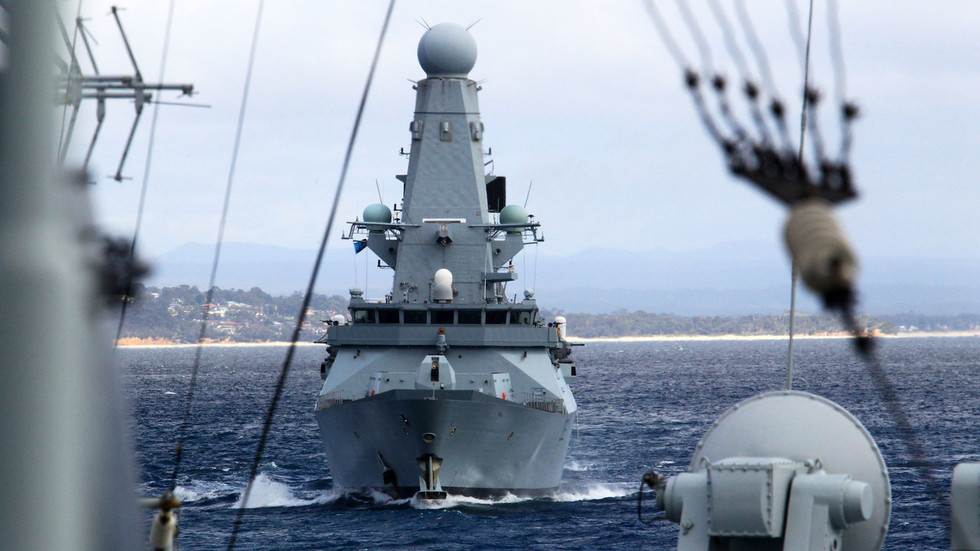The British Royal Navy is experiencing a significant decline in its destroyer fleet, with a recent report by The Telegraph indicating that only two out of six advanced Type 45 destroyers are operational. This has resulted in the fleet reaching its smallest size in over a century, with four of these vessels currently undergoing extensive repairs, maintenance, or other work at Portsmouth docks. These Type 45 destroyers constitute the backbone of the Royal Navy’s air defense capabilities, designed primarily for anti-aircraft and missile warfare. However, they have been beset by persistent maintenance issues, leading to operational inefficiencies; in some cases, individual vessels have spent more time in dry dock than on active service since their commissioning. This concerning state of the fleet has raised alarms regarding the UK’s national security, prompting warnings from MPs about the increasing vulnerability to potential sea and air attacks.
The worries expressed by members of Parliament underline the gravity of the situation. MP Mike Martin, a member of the Defense Select Committee, emphasized that having only two operational destroyers significantly hampers the UK’s air defense capabilities, to the point where it cannot adequately protect London or the broader United Kingdom. The situation is further compounded by issues within the Type 23 frigate class, with only six of the Navy’s eight frigates currently operational. With just eight of the 14 destroyers and frigates available for immediate deployment, the comparison to the Navy’s peak operational capacity in 1945—where over 800 vessels were ready—highlights a staggering decline. This reduced capability signifies not just operational challenges, but also a strategic vulnerability in defense capabilities.
The causes for the reduced operational capacity appear multifaceted. Aging vessels and significant maintenance needs have left the Royal Navy struggling to provide adequate sea and air defense solutions, especially amidst rising geopolitical tensions. Furthermore, British Ministry of Defence officials have openly stated that the nation is not prepared to engage in a conflict on the same scale as the ongoing situation in Ukraine. Alistair Carns, a notable defense official, shared concerns that in the event of a full-scale conflict, the UK could deplete its military personnel within six months to a year. Given that the British Army’s active-duty numbers are at historically low levels—just over 73,000 troops—it suggests a diminished ability to project military force globally.
The historical context of the Royal Navy’s current capabilities illustrates a dramatic shift from a once-mighty maritime force to one faced with unprecedented challenges. During its height following World War II, the Royal Navy not only had a significantly larger fleet but also enjoyed considerable resources and manpower that allowed for effective global naval operations. This stark contrast serves as a poignant reminder of the evolving nature of military preparedness in the UK, alongside the changing demands of national security amidst global instability.
As Britain’s defense landscape continues to shrink, concerns escalate regarding the willingness and readiness of the Royal Navy to face various maritime threats in the current era. The call for a comprehensive strategy to revitalizing and modernizing the fleet has become increasingly urgent. There is a growing recognition that addressing logistical obstacles, funding, and perhaps a reevaluation of military priorities is critical to reestablishing the country’s maritime capabilities and readiness. With rising global tensions and increasingly complex security challenges, lawmakers and defense strategists must urgently address these chronic issues if the UK is to restore its naval strength and security posture.
The current predicament of the British Royal Navy therefore raises essential questions about prioritization and commitment toward defense capabilities in an age marked by threats of aggression and global conflict. The implications of inadequate naval strength are profound, not just for immediate national security but also for Britain’s historical role as a leading global defender of freedom and maritime integrity. Future investment and strategic reforms will play a fundamental role in determining how the UK can reclaim its maritime prowess in a continuously evolving geopolitical landscape. As the Royal Navy navigates these waters, the path forward will require a concerted effort involving not only military leadership but also cross-party political support to ensure a robust and resilient defense posture for the UK.

